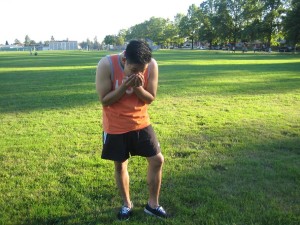Tuberculosis is a bacterial disease that can develop anywhere in the body but it usually affects the lungs. Many individuals end up with this disease every year. Among those who are infected, a small percentage of these cases develop an active infection. Among others, the immune system overcomes the bacteria and ends up coated with a dense wax-like substance which makes them dormant. Take note that the bacteria can stay dormant for years, but can become active if the immune system of the individual is weakened.
What are the causes?
The bacterium responsible for causing tuberculosis is the mycobacterium tuberculosis. Take note that only those who have an active infection are contagious. Individuals who have dormant tuberculosis will not spread the infection.
Once an individual with active tuberculosis sneezes, coughs, talks, laughs or sings, they spread the bacteria via the air that can be readily inhaled by others. Tuberculosis can be identified via a skin or blood test but even a latent infection can trigger a positive result.
What are the contributing factors?

The risk for infection is higher if there is prolonged and close encounter with an infected individual such as in a family or in certain settings where many are in close contact with one another. The risk for exposure to or infection with the disease is higher in hospitals, prisons, nursing homes and other healthcare facilities.
The chances of the infection to become active can increase if the immune system of the individual is compromised due to HIV or other diseases, malnutrition, age and use of prohibited drugs. In addition, tuberculosis is considered endemic in Africa, Eastern Europe, Asia, Caribbean and most of Latin America. Individuals from these areas or those who were in close prolonged contact with those from these areas face a higher risk of exposure.
Treatment and prevention
Both latent and active tuberculosis can be properly managed but it typically requires long-term drug therapy. When it comes to latent tuberculosis, it requires using one drug for up to 9 months while an active infection requires several drugs that are taken for 6-12 months. Individuals who are being treated should take the medications as prescribed as well as finish the complete course of therapy so that the bacteria will not become resistant to the drugs.
The BCG vaccine is specifically for tuberculosis. On the other hand, the vaccine will not always protect individuals from acquiring the disease and it can cause a positive skin test even without infection. Other methods of minimizing the infection include proper ventilation systems among high-risk facilities and quick identification and prompt treatment of individuals with a possible infection.
Once an individual starts to experience the symptoms of common cold along with coughing that become persistent, it is best to consult a doctor for proper assessment of the condition.
